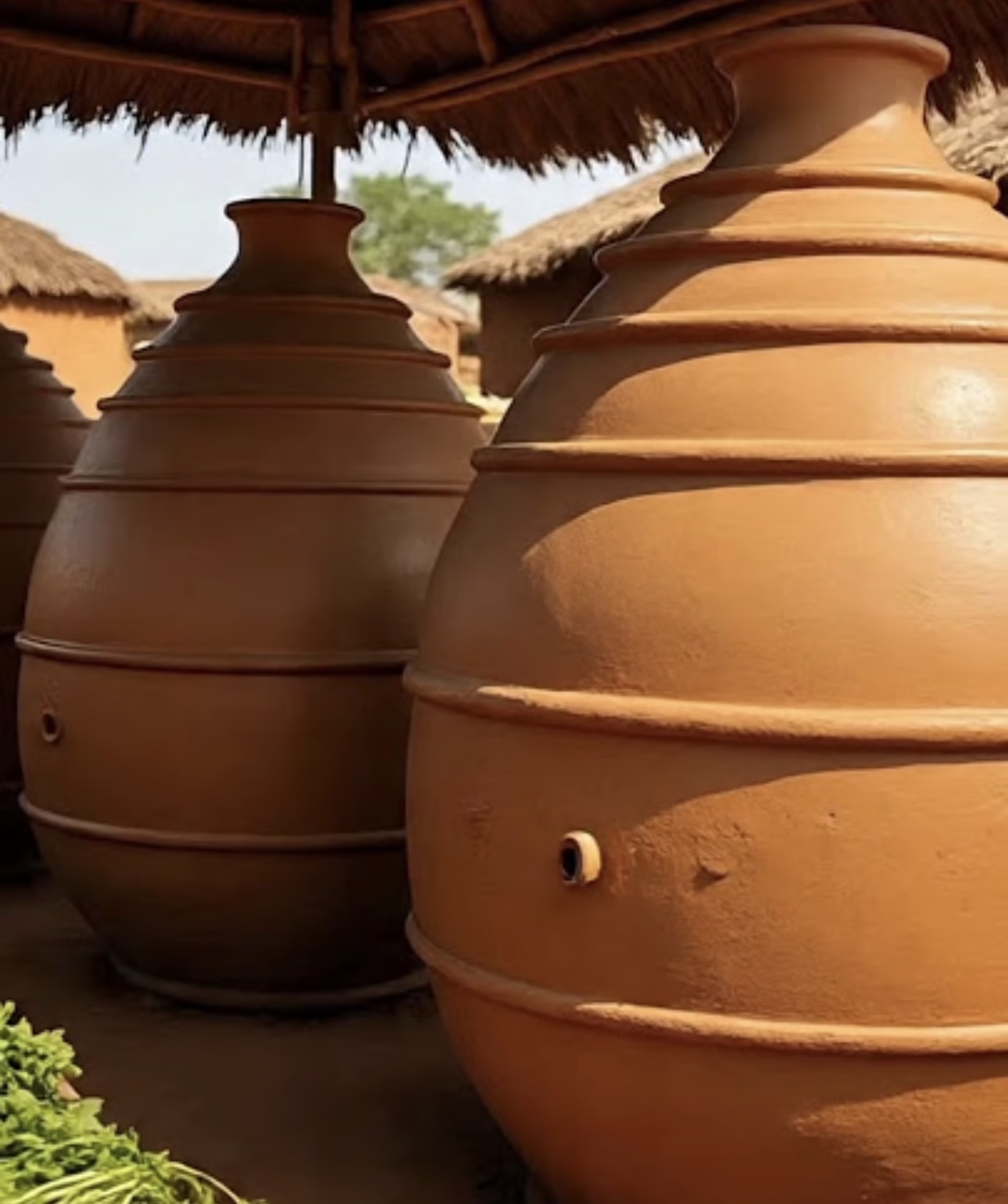Kenyan Farmers Turn to Clay and Evaporation for Off-Grid Food Storage

In rural parts of Kenya a simple but ingenious adaptation of age-old technology is helping farmers preserve produce without relying on electricity. Drawing on the principle of evaporative cooling, artisans and engineers are crafting storage vessels out of porous terracotta and other clay materials, often sealed and shaded, in which fruits, vegetables and dairy can remain cooler than ambient temperatures for extended periods.
One locally shared design depicts large dome-shaped “beehive” clay structures—hand-built and set in shaded areas—within which farmers place produce baskets. The shape and material promote airflow and evaporation, lending a passive cooling effect. Although social-media posts claim that food can “stay fresh for days using only shade and evaporation”, independent documentation remains thin.
The technique itself is well grounded in research. Academic teams, including those from the Massachusetts Institute of Technology’s D-Lab and the University of Nairobi, have explored evaporative-cooling chambers—sometimes retrofitted from shipping containers—as cost-effective cold storage for smallholders. These devices rely on water evaporation from wetted materials to draw heat away, reducing spoilage in hot, dry climates. Meanwhile, broader reviews note that clay-pot coolers can extend the shelf life of leafy greens from about 1 day to 4+ days under the right conditions.
However, while the “beehive-shaped clay fridge” motif is gaining attention, there is currently limited evidence that this exact form is widely adopted across Kenyan farming communities. Many implementations remain at the experimental or pilot stage, and designs vary considerably. Experts also caution that such systems require regular maintenance (keeping the clay wetted, ensuring good shade and air flow) and are most effective in the right climatic conditions (dry air, good ventilation). Without these factors, the cooling benefits diminish.
For Ghana and other West African countries, this innovation holds promise. Locally produced, low-cost clay cooling systems could help reduce post-harvest losses, improve the marketing window for fresh produce, and reduce reliance on grid-powered refrigeration. But scaling up will require attention to user training, local manufacture of materials, and long-term durability.
As one Kenyan farmer put it (via social feed): “We no longer rush to sell all our vegetables first thing in the morning—now we can keep them shaded for a bit longer and fetch a better price.”
What to Watch
- Engineers and development organisations are experimenting with larger-scale evaporative cooling chambers (e.g., shipping‐container sized) in Kenya, capable of storing several tonnes of produce at lower cost than electric refrigeration.
- For dry tropics, the key climate factors are low humidity and good air flow. In humid zones the method is less effective.
- Maintenance matters: the clay surface must remain moist, interior must be covered/shaded, and there must be air circulation.
- Local manufacture: sourcing suitable clay/terracotta, local artisans, cost of construction vs. benefit in reduced spoilage.
Conclusion
The Instagram post is largely correct in describing that Kenyan communities are using clay/evaporative cooling to keep food fresh without electricity; however, it likely overstates the prevalence and uniformity of “beehive-shaped clay refrigerators” as a standard farm tool. For your work (in renewable energy, rural development, food security) this concept is relevant and promising — but if you cite it, I’d recommend adding a caveat that these designs are emerging innovations rather than fully scaled mainstream solutions.

